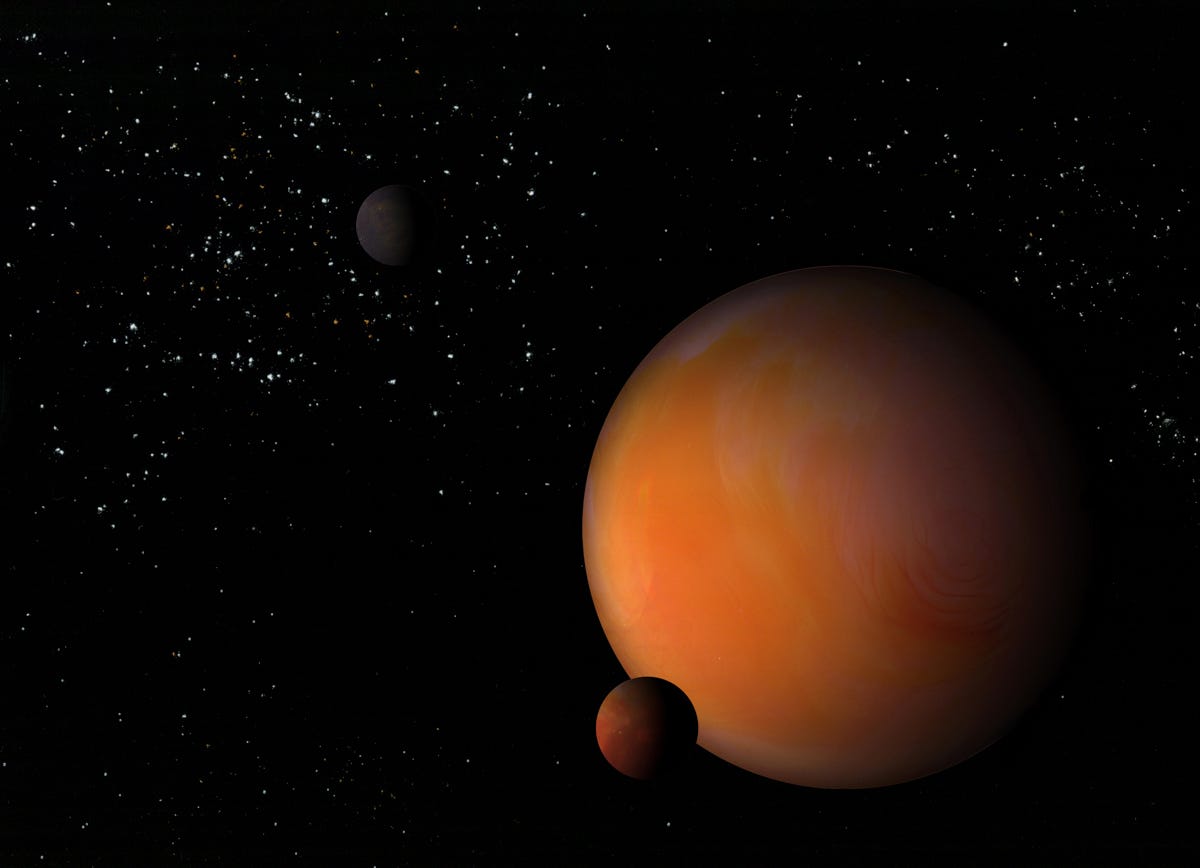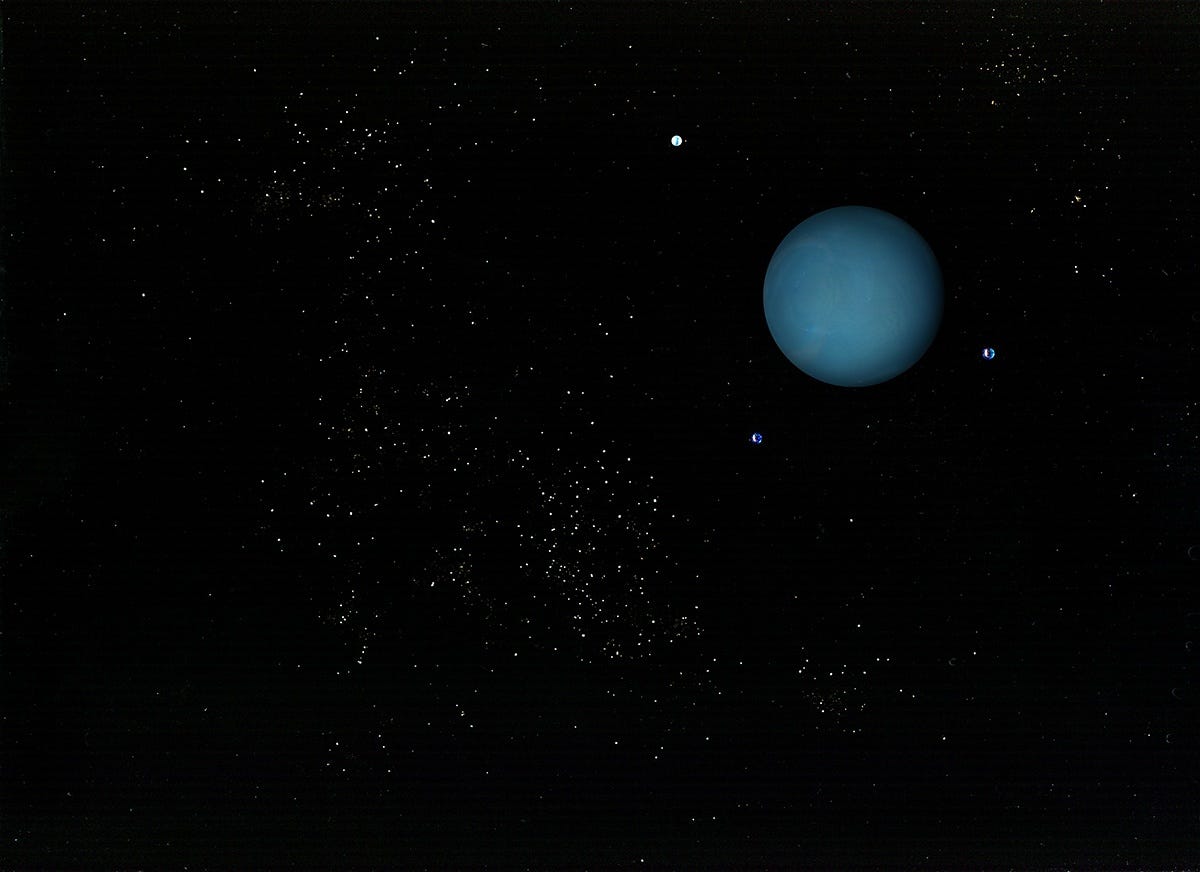Creating gorgeous cosmic worlds from kitchen goods (pictures)
Photographer Navid Baraty makes captivatingly beautiful interstallar images using stuff you probably have in your own home. Including cat hair.

Liquid planet
When photographer Navid Baraty's not taking beautiful pictures on planet Earth, he's making images of alien planets, black holes, nebulae and distant galaxies. He does so by mixing various common household ingredients, placing them on his Epson scanner and running it with the lid open.
Baraty frames these striking images in the context of an imaginary mission called Wormhole-Accelerated Nomad Delivering Reconnaissance, or Wander. He's even built a Facebook page for the project.
This shot, called "Planet," shows stars made from salt, baking powder and Tums; moons formed from the bottom of a glass filled with coconut milk, water and food coloring; and a planet made from the bottom of a glass containing half and half, water and food coloring.
Related article: Artist creates amazing alien worlds using cream, other edibles
Cat nebula?
You might be able to discern that this nebula is made from garlic powder, salt, flour, cumin and turmeric. But could you guess the special ingredient that forms the nebula's gas streams? I gave you a hint in the title.
That's right! Cat fur.
Related article: Artist creates amazing alien worlds using cream, other edibles
Palatable planet
This is the most vivid and Earth-like planet in photographer Navid Baraty's series of interstellar images made from common household items. Instead of the amazing mix of ingredients needed for life on our planet, this one is made by scanning the bottom of a glass filled with half and half, water and food coloring. The stars are simply salt, cinnamon and baking powder.
Related article: Artist creates amazing alien worlds using cream, other edibles
Black, sugar on the side
If you were actually piloting a spacecraft through a galaxy, you'd want to steer clear of a real black hole as it would likely suck you in and crush you. There's nothing to fear from this one crafted by photographer Navid Baraty, however. It's only the bottom of a glass of coffee. The stardust around it is made from salt, sugar, cornstarch and cinnamon.
Related article: Artist creates amazing alien worlds using cream, other edibles
A tamer Titan?
Looking a bit like Saturn's moon Titan, the environments of this orb and its accompanying moon are a lot more hospitable, having been made simply from the bottoms of glasses holding coconut milk, half and half, water and food coloring.
Navid Baraty makes his cosmic images by placing the objects on an Epson photo scanner, then making a scan with the lid open.
Related article: Artist creates amazing alien worlds using cream, other edibles
Mediterranean Galaxy?
Navid Baraty, who creates gorgeous alien worlds using common household items, calls this shot "Distant Galaxy." If you were somehow exiled from our own galaxy, this wouldn't be a bad one to wind up in, seeing as it's comprised of olive oil, sesame oil, water, cumin, cinnamon and flour.
Related article: Artist creates amazing alien worlds using cream, other edibles
Stellar makeup
Much of the red color we see in distant nebulae comes from hydrogen. Here it's supplied by makeup. Rounding out the look of Navid Baraty's cosmic cloud is olive oil, chalk, baby powder, salt and water.
"I've had a fascination with space ever since I was a kid camping in the backyard and looking at the stars through my childhood telescope," Baraty says.
Related article: Artist creates amazing alien worlds using cream, other edibles

Ice (cream) planet
This shot is called "Icy Planet." In our solar system, both Neptune and Uranus are considered "ice giants." The blueish color of both planets comes from the methane in their atmospheres, which absorbs red light and reflects blue.
The blueish color of Navid Baraty's shot here comes from food coloring mixed in a glass with half and half and water. The moons are made from silica gel and food coloring, and the sweet stars come from sugar, cinnamon and cumin.
Related article: Artist creates amazing alien worlds using cream, other edibles
Supercluster fakealicious
Superclusters are groupings of galaxies that can stretch to over several millions of light years in space, according to NASA. This particular supercluster created by photographer Navid Baraty is no bigger than the bed of an Epson scanner. It's comprised of flour, sugar, salt, olive oil, cumin, turmeric, cinnamon, curry, garlic powder and water.
Related article: Artist creates amazing alien worlds using cream, other edibles
Ghost ON the machine
As our Wander mission draws to a close, we're left with this mysterious image that photographer Navid Baraty calls "Ghostly Anomaly."
Baraty simply smeared the glass of his scanner with butter mixed with food coloring and sprinkled some salt around it.
To learn of more Wander's discoveries, be sure to keep an eye on Baraty's Instagram page. You never know what might spill on his scanner -- um, what bright new worlds Wander will encounter next.
Related article: Artist creates amazing alien worlds using cream, other edibles

